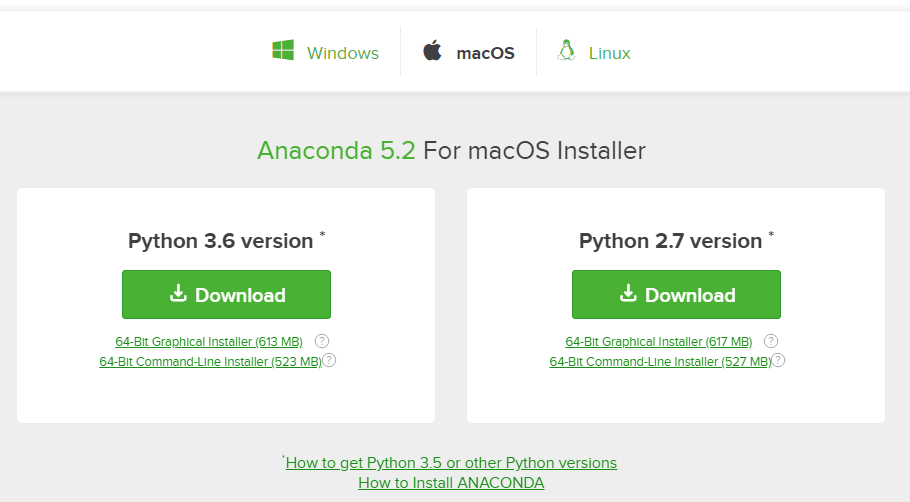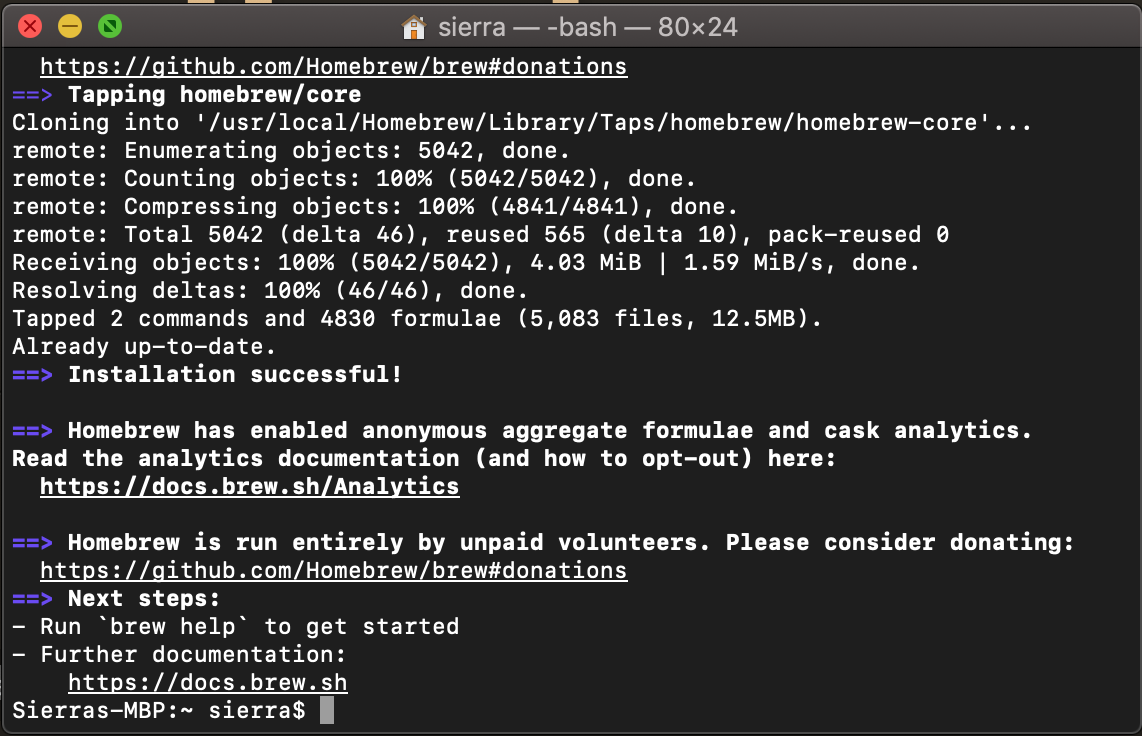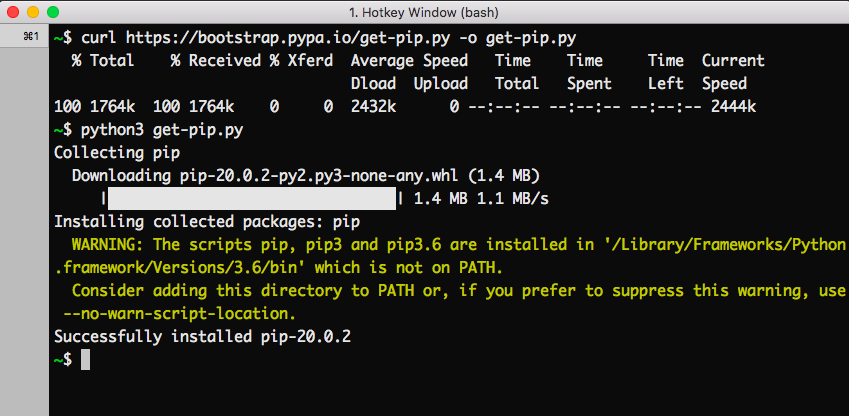

- #HOW TO RUN PRE INSTALL PYTHON ON MAC HOW TO#
- #HOW TO RUN PRE INSTALL PYTHON ON MAC MAC OS#
- #HOW TO RUN PRE INSTALL PYTHON ON MAC FULL#
- #HOW TO RUN PRE INSTALL PYTHON ON MAC SOFTWARE#
This means that if we run any python script now, it will be run as per the current environment's settings and packages. To start using this new environment, run the following command:Īs you run this command, you will see a prefix added to your terminal like this, It will also have a pyenv.cfg file with python installation configuration. It will contain it's own copy of python version in lib/ subdirectory along with a subdirectory site-packages/ to store third party modules that you will install in this virtual environment. This will create a new directory/folder for your virtual environment by the name my_first_env. Once we are inside the directory, run the following command to create an environment: The mkdir is a command used to create directory and using cd command we can open that directory, and that is exactly what we have done. Go to the directory in which you want to create a new directory for python environment. I suggest, if you are starting up with python, create a new directory. Step 1:Ĭhoose a directory to put Python programming environment in, or create a new directory. Let's setup our very own virtual environment. We can setup as many python virtual environment as we want. Setting up virtual environment allows us to setup independent environment for different projects, with different dependencies. To setup virtual environment, we can use the venv module provided by Python 3.

#HOW TO RUN PRE INSTALL PYTHON ON MAC HOW TO#
$ brew update python3 How to Create a Virtual Environment To update the Python 3 installation, we can use Homebrew, To check the version of python installed, use the following command:
#HOW TO RUN PRE INSTALL PYTHON ON MAC SOFTWARE#
Just like we do for Homebrew, but pip will install only python libraries and software packages within the python environment.

Pip is used to install and manage libraries and packages that we want in our python development environment. It may take a few minutes as a lot of packages and dependencies are downloaded, you can see what Homebrew is doing on the screen logs.Īlongside Python 3, pip, setuptools and wheel will also be installed. This command will return a list of all the available packages for python, you will also see python3 and other latest versions on python in the list, and that is what we need. Step 1:Īs you can see in the Homebrew installation guide, you can search for available software packages using the brew search command. Considering that you have successfully setup Homebrew, let's start with Python 3 installation. If you do not have Homebrew installed on your Mac, follow our Homebrew Installation Guide to set it up on your system. Homebrew is a software package manager which makes it very easy to install, update, cofigure and uninstall software packages required in OS X. To install Python 3.x we will be using Homebrew.
#HOW TO RUN PRE INSTALL PYTHON ON MAC MAC OS#
As the Mac OS wouldn't allow you to do so because it uses Python and cannot afford a change in it's version as that may lead to errors or failures at the OS level. Updating the Pre-installed Python 2.x in Mac OS crunchify-hosts crunchify-install-python-java.Every Python developer who uses Mac OS comes across the problem of whether to use the pre-installed python 2.7 on Mac or setup Python 3.x version, to start developing on the latest python version.Īlthough Python 2.x is still in use but only to support the already developed products, but if you are starting afresh then I would advice to choose Python 3.x, as sooner or later you will have to move to it, so why not today.
#HOW TO RUN PRE INSTALL PYTHON ON MAC FULL#
Python 2 is a strong language, and only power users will get to experience the full benefit of Python 3’s new features. It’s very mandatory to install all basic binaries before you copy your application dependencies. The main problem is that there’s a lack of compelling motivation. Once all of above pre tasks are done, you need to copy your application and start those applications. Then install latest Python, Install Java and so on. First thing you need to do is to install OS updates. You provisioned a new instance on Amazon EC2 cloud or Google Cloud. Pre_tasks is a task which Ansible executes before executing any tasks mentioned in.


 0 kommentar(er)
0 kommentar(er)
